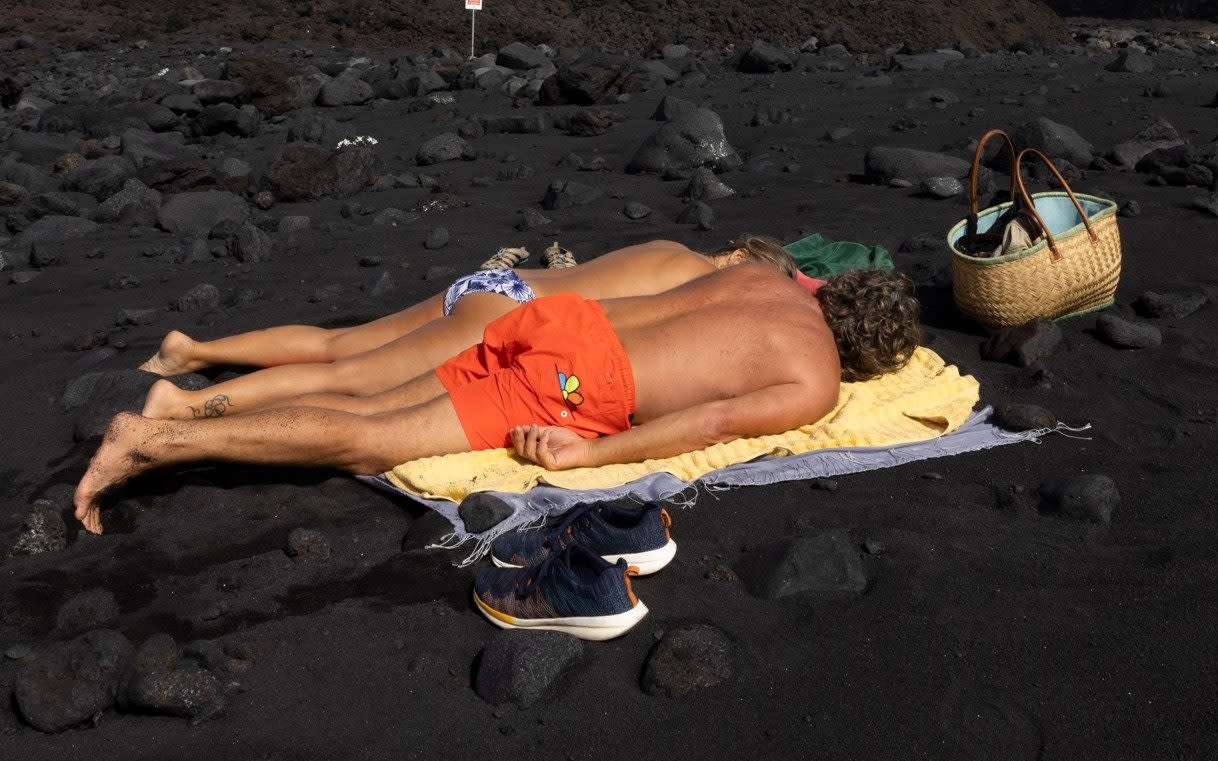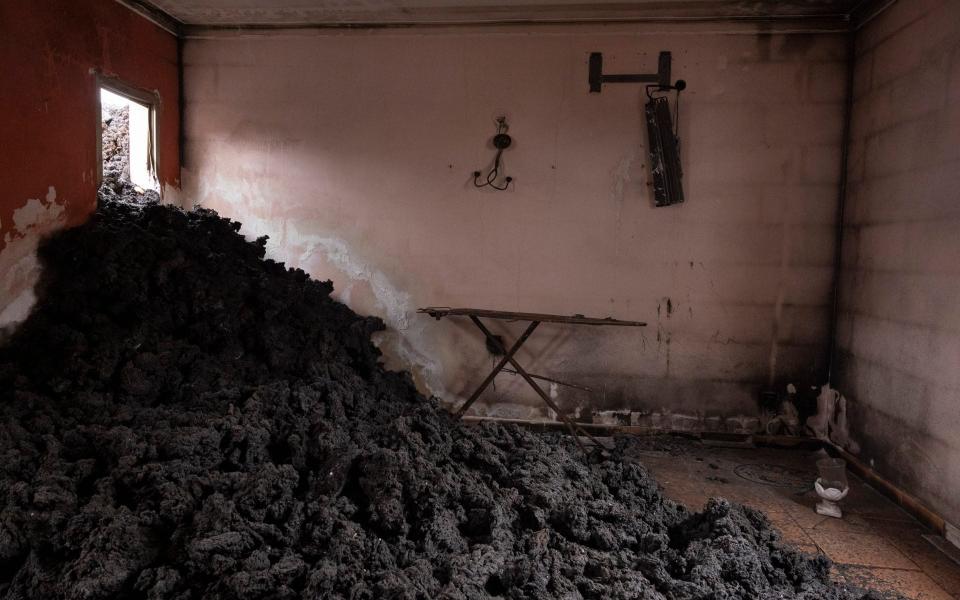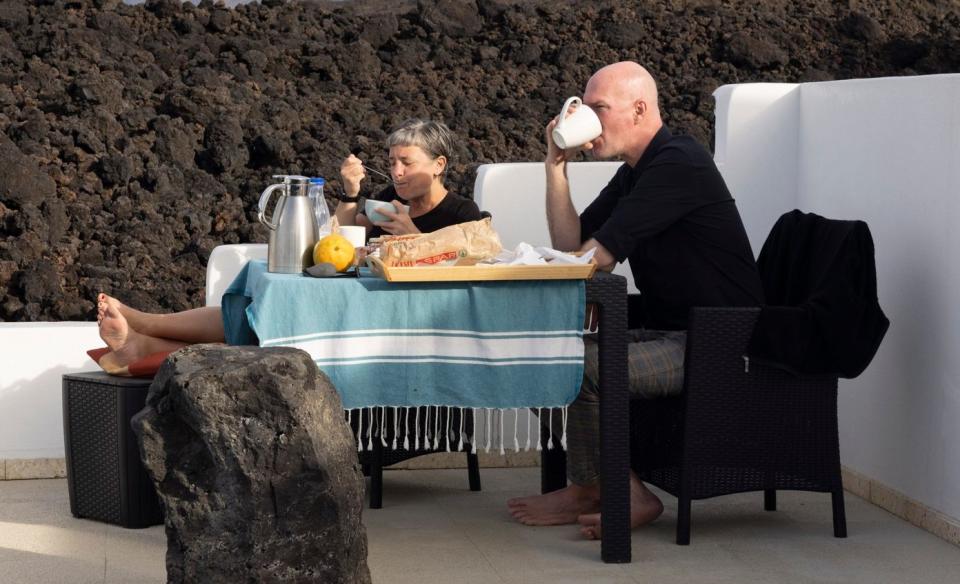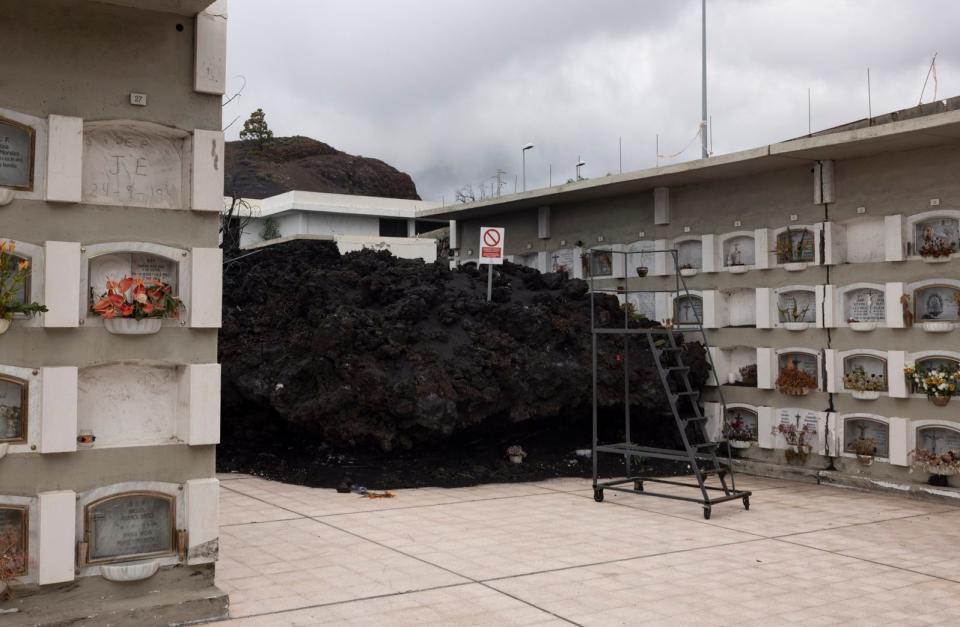The world’s newest and eeriest beach attracting disruptor tourists

The volcanic episode that began on 19 September 2021 on the Canary Island of La Palma was what you might call a slow burner. No shattering explosions, no incandescent boulders thrown miles into the sky, no pyroclastic flows of superheated pumice and gas hurtling murderously downhill. After a week of portentous earthquakes, lava spouted forth from fissures along the Cumbre Vieja ridge. From the settlements far below, it seemed fairly innocuous at first, no more threatening than a couple of big Roman candles, but the flow just didn’t stop, swelling over days and then weeks into an implacable, slo-mo avalanche of molten rock that rolled down to La Palma’s west coast.
Some 7,000 residents were evacuated, almost a 10th of the island’s population, watching in helpless anguish from distant hillsides or on TV drone footage as their homes and livelihoods were claimed by the burning tide. Swimming pools surrendered in furious clouds of steam and sulphur. A church tower toppled into the lava. Banana plantations – the economic mainstay of an island where tourism has always been a support act – were torched and buried in dismaying profusion. At its peak, the flow was more than two miles wide and almost four miles long. It steamrollered over the coastal highway and met the Atlantic with an apocalyptic hiss.

When the eruption ceased, 85 traumatic days later, the catalogue of destruction listed 1,345 houses, 16 schools and more than 100 business premises. Fifty miles of roads had been buried, and a great swathe of agricultural land lost, including almost a quarter of the island’s banana plantations. The total damage has been estimated at £760 million, and it’s thought that only half the affected properties were fully insured. On account of the lava’s creeping progress and the prompt evacuation, the sole fatality was an elderly man who was overcome by toxic gases while sweeping ash from his roof.
The eruption changed La Palma in the most fundamental fashion, redrawing its coastline where the lava pushed out into the sea and created two new peninsulas. Above the original base, a new volcanic cone, 300 metres high, has been added to the island’s skyline. Surveying the aftermath in between these two extremities, locals can hardly have imagined a hopeful future. From mountain to sea, the eruption had left a yawning moonscape of coal-black geological rubble in its wake, a 3,000-acre scar of scorched earth. In some areas, the lava lies more than 200 feet deep, and could be releasing heat and noxious gases for years to come.

Settlements on the cusp of entombment when the flows stopped were caught in a haunting and surreal purgatory, some buildings obliterated, some miraculously unscathed, some almost carefully half-filled with cindered rocks, the work of a vengeful but precise deity. The contrast between the vacant, still-life silence of these scenes and the raging, primeval forces that created them is almost too much to make sense of. We see a morning-after battlefield, an environment man thought he’d tamed before it rose up in anger and burned the place down. Las Manchas cemetery, where well-tended ranks of marble vaults hold back a satanic slag heap, looks less like the legacy of a natural disaster than some ambitious contemporary-art installation. Death After Death.

With flights disrupted for months, tourist numbers fell by a third in the year after the eruption, and the damage to 270 foreign-owned holiday homes seemed unlikely to attract a lucrative new wave of semi-resident ex-pats. Yet, nearly three years on, literal and figurative green shoots are poking through that dead black landscape. Plants and shrubs sprout from the ash, and at the peripheries of the lava field, the Canary Island pine is actually prospering. This endemic conifer has pinecones that are encased in resin which melts in the heat of a fire and releases seeds. And it transpires that for a particular kind of foreign visitor – the ever-growing cohort of jaded and mildly adventurous holidaymakers with a taste for wacky Instagram selfies – there’s nothing quite like a scorched alien wilderness.

When Iceland’s Eyjafjallajökull volcano erupted in 2010, causing air-traffic chaos around the world, the native tourist authorities feared the worst. But instead of deterring visitors, the eruption put Iceland centre stage on the offbeat-holiday map, catalysing a tourism boom that transformed the national economy. For further proof that there’s money in magma these days, La Palma needs only to glance over its shoulder at the nearby island of Tenerife, where Teide National Park, a bleak but compelling pumice desert laid out around one of the world’s largest volcanoes, now attracts three million visitors a year.

And so La Palma, long considered the most obscure of the Canary Islands, is slowly rising from its ashes, luring holiday disruptors bent on laying their towels out on the world’s newest beach, no matter how lumpy . This probably isn’t the time to ponder the inevitability of further eruptions in this actively volcanic chain of islands: this Cumbre Vieja episode was the seventh recorded on La Palma since 1470. Simple statistics tell us that there could be a 50 per cent chance of another eruption in the next five decades. Nobody wants to think about the more controversial scientific speculation which pinpoints La Palma as the likeliest Canary Island source of a massive volcano-induced landslide – which could dispatch a 300-foot tsunami across the Atlantic.


